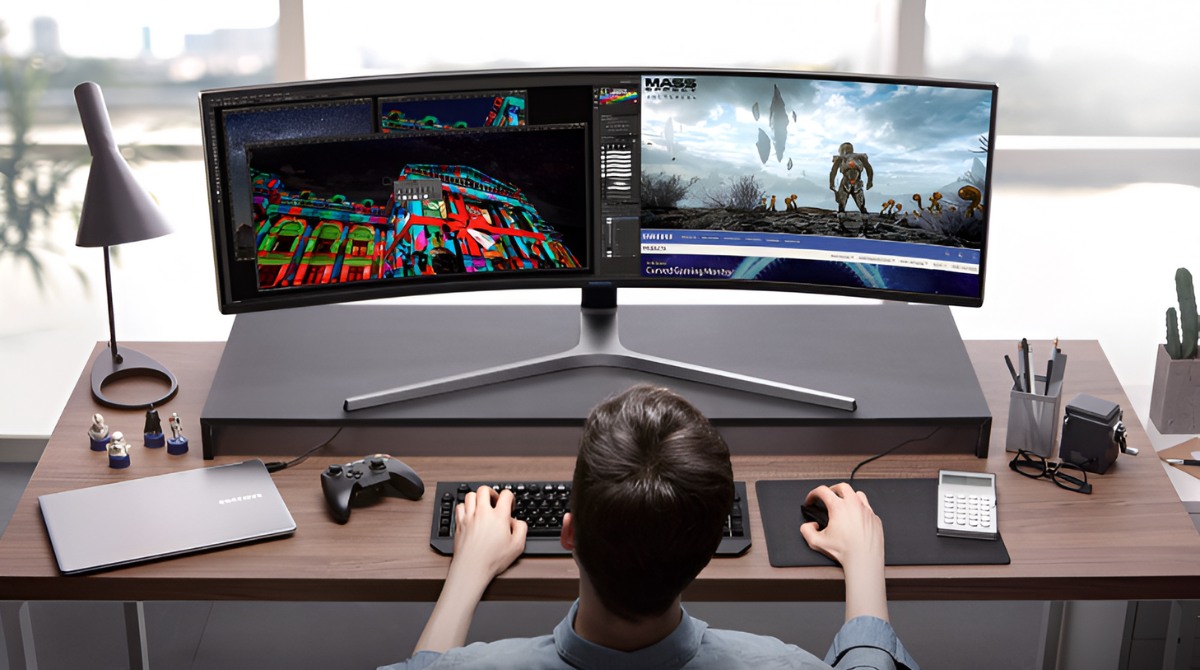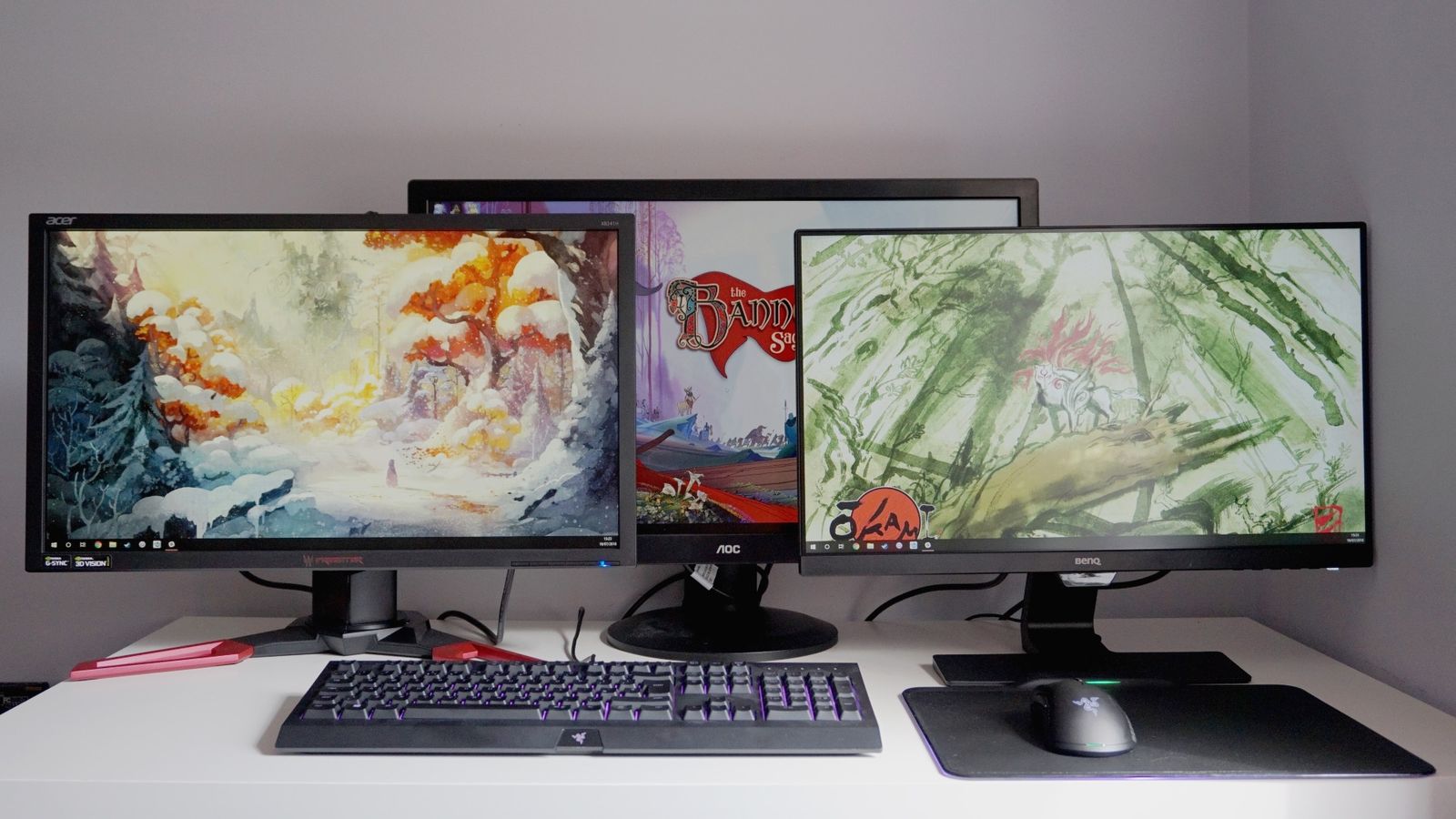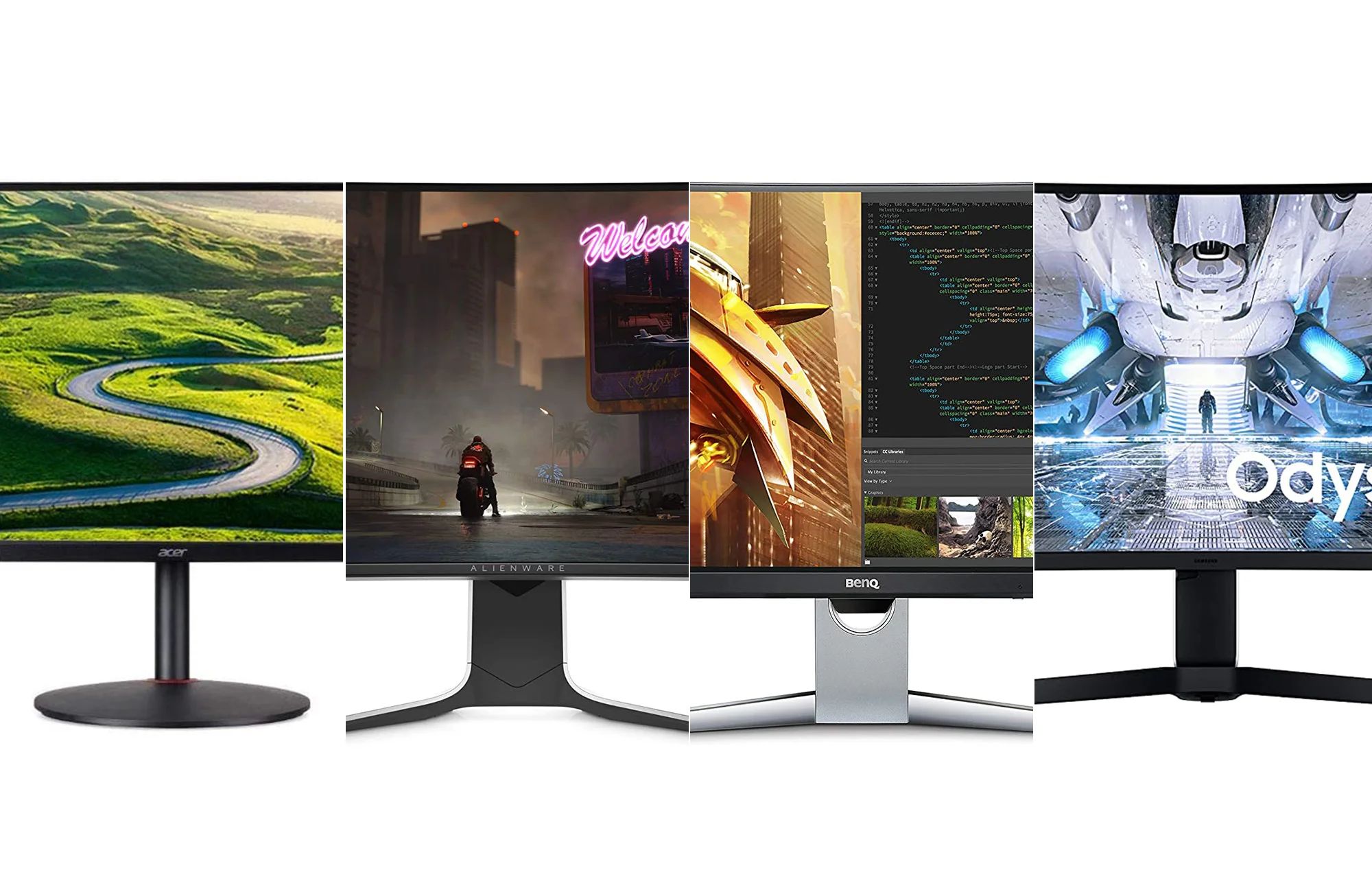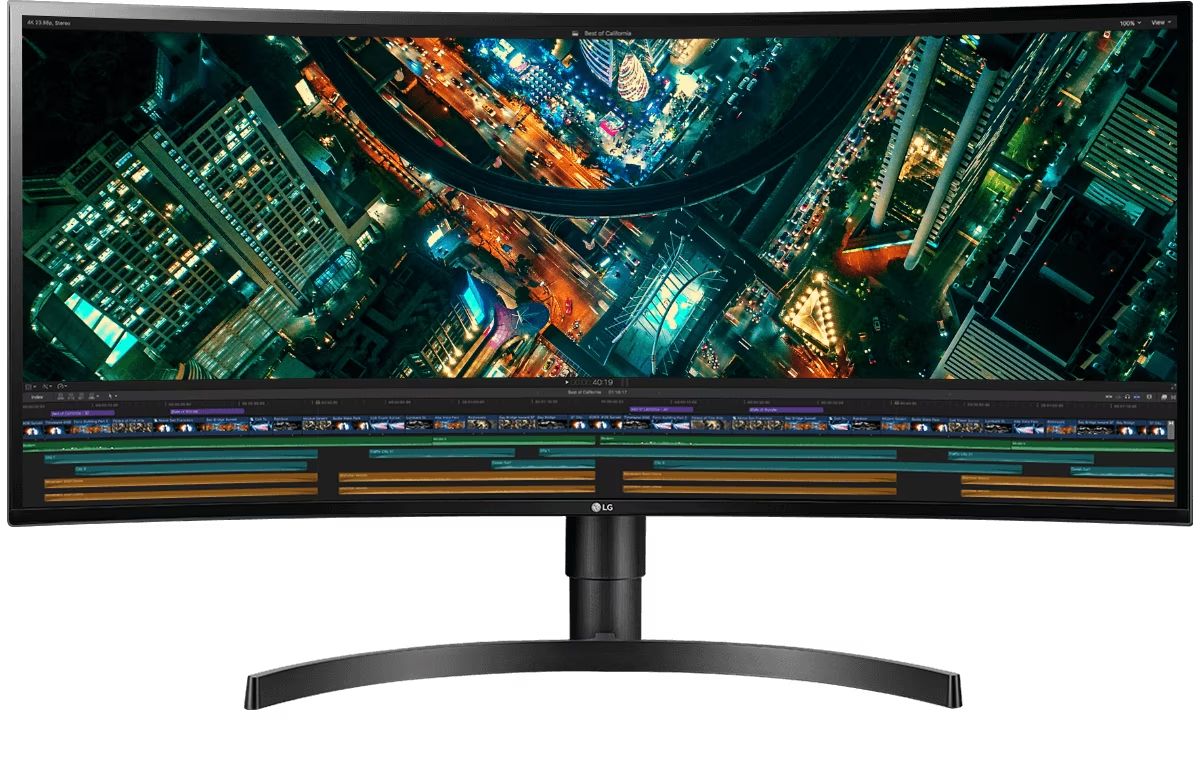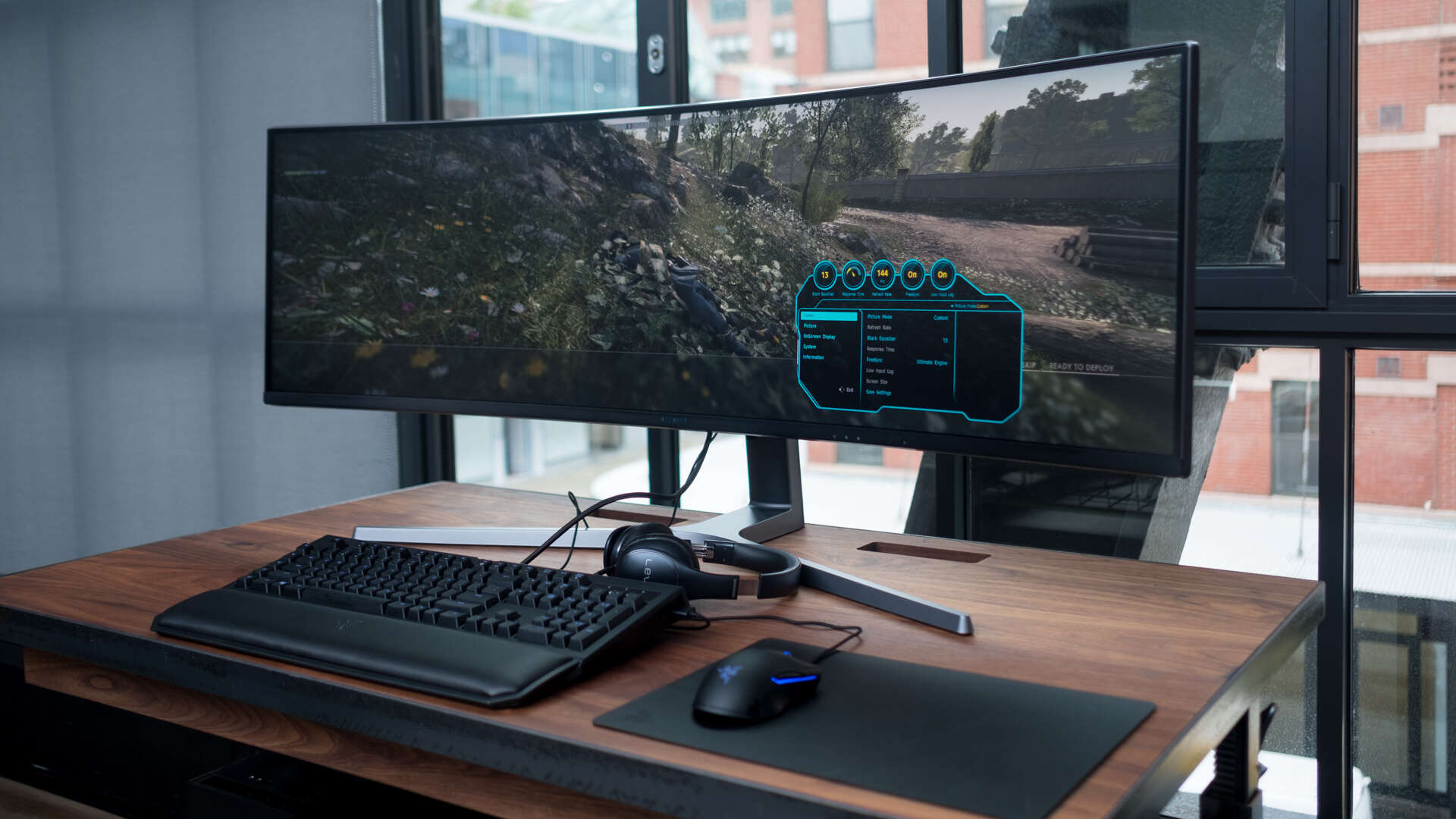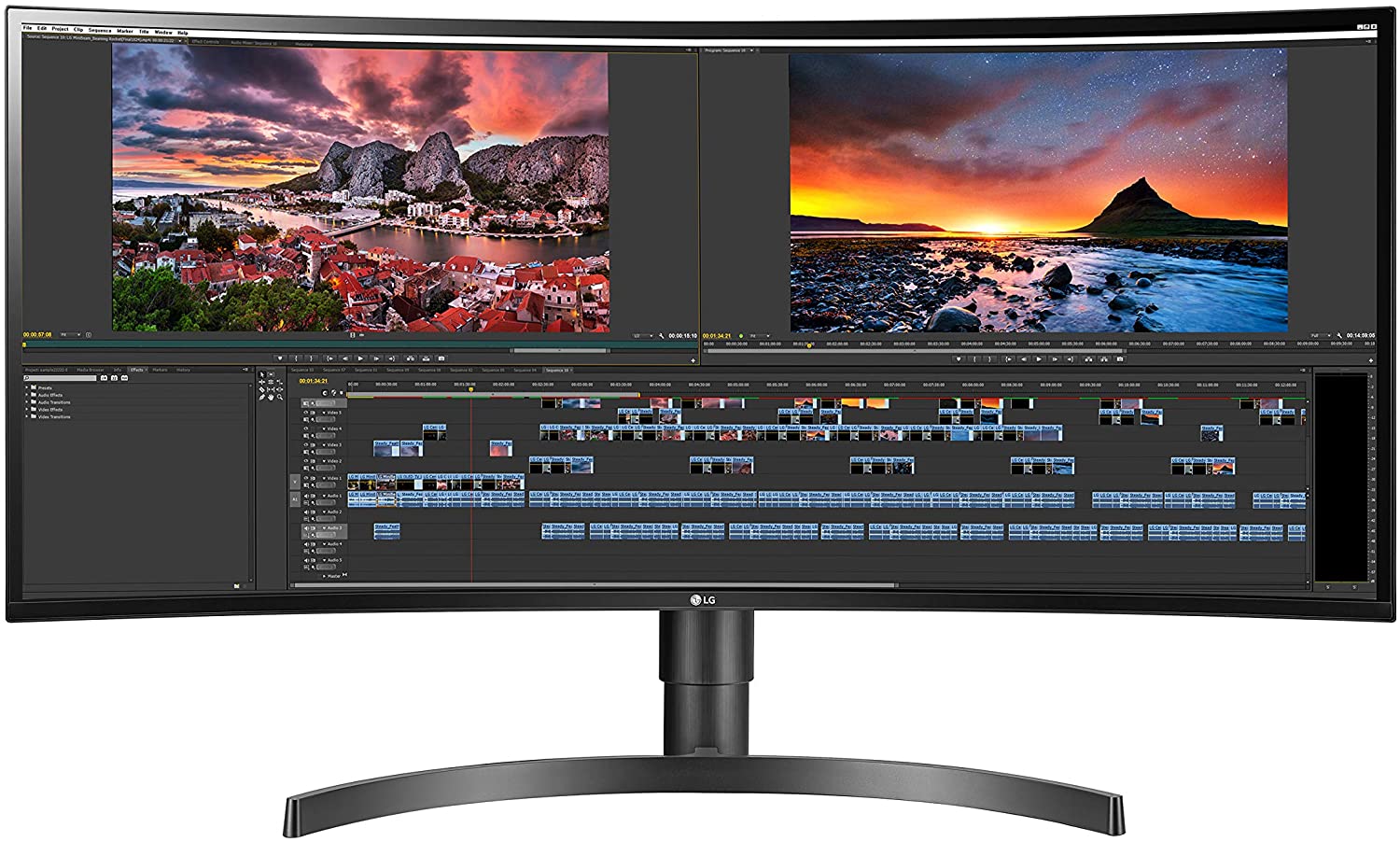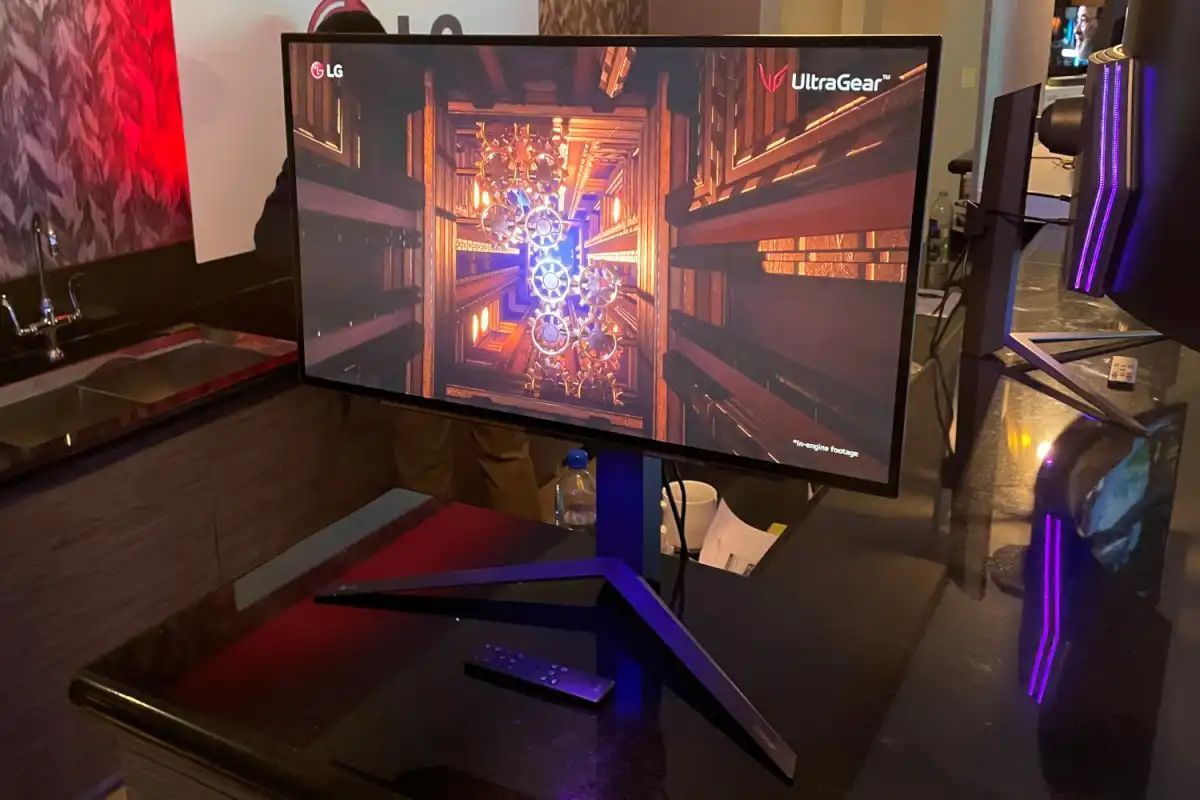Introduction
As technology advances, computer monitors continue to get bigger and more impressive. One such example is the 49-inch ultrawide monitor, which offers an amazing viewing experience with its expansive display. Whether you’re a graphic designer, gamer, or multitasker, the immersive visual experience provided by a 49-inch ultrawide monitor can be a game-changer.
However, to fully utilize the capabilities of a 49-inch ultrawide monitor, you need a powerful computer that can handle the high demands of such a large and high-resolution display. In this article, we will explore the key components that make up a powerful computer system and discuss the specifications you should consider when deciding how powerful of a computer you need to run a 49-inch ultrawide monitor.
From the resolution and refresh rate of the monitor to the graphics card, processor, memory, storage, and operating system, each component plays a crucial role in ensuring a smooth and seamless experience with your 49-inch ultrawide monitor. By understanding the hardware requirements, you can make an informed decision when selecting a computer that can handle the demands of such a large display.
So, for all the graphic designers who work on intricate designs, gamers who crave high frame rates, and professionals who need to multitask seamlessly, read on to find out what kind of computer setup is necessary to harness the full potential of a 49-inch ultrawide monitor.
Resolution and Refresh Rate
One of the key features to consider when using a 49-inch ultrawide monitor is its resolution. A higher resolution allows for sharper and more detailed visuals, making it perfect for graphic design work, video editing, and gaming. Most 49-inch ultrawide monitors offer a resolution of 5120 x 1440 pixels, which provides an immersive viewing experience.
However, it’s essential to ensure that your computer can handle this high resolution. To do so, you’ll need a powerful graphics card that can render images and videos at the native resolution of the monitor without any lag or stuttering. A graphics card with at least 8GB of dedicated VRAM is recommended to handle the demands of a 49-inch ultrawide monitor effectively.
In addition to the resolution, the refresh rate of a monitor is another crucial aspect to consider. The refresh rate refers to the number of times the monitor updates the image on the screen per second. Higher refresh rates, such as 144Hz or 240Hz, provide smoother visuals, especially during fast-paced gaming or video playback.
To fully utilize the higher refresh rates offered by a 49-inch ultrawide monitor, you’ll need a powerful graphics card that can support these higher frequencies. Ensure that the graphics card you choose can handle the monitor’s refresh rate and deliver smooth, tear-free visuals. This is particularly important for gamers who want to make the most out of their gaming experience.
By selecting a computer with a powerful graphics card that can handle the high resolution and refresh rate of a 49-inch ultrawide monitor, you can ensure that you’ll get the best visual experience whether you’re playing games, watching movies, or working on creative projects.
Graphics Card
When it comes to running a 49-inch ultrawide monitor, the graphics card is undoubtedly one of the most critical components of your computer setup. The graphics card is responsible for rendering and displaying images on the monitor. Since a 49-inch ultrawide monitor has a high resolution and often supports high refresh rates, it requires a powerful graphics card to deliver smooth and lag-free performance.
For a 49-inch ultrawide monitor, it is recommended to invest in a high-end graphics card with ample dedicated VRAM. The VRAM, also known as Video RAM or Graphics RAM, is crucial for storing and accessing the graphics data necessary to drive the monitor’s high-resolution display.
The amount of VRAM required depends on the type of tasks you’ll be performing. For gaming, at least 8GB of dedicated VRAM is recommended to handle the demands of modern AAA game titles. This ensures that you can enjoy games at high settings without any noticeable lag or stuttering.
If you’re primarily using the 49-inch ultrawide monitor for professional work such as graphic design, video editing, or 3D rendering, you may benefit from a graphics card with even more VRAM. Complex design projects and high-resolution video editing can be resource-intensive, and having a graphics card with 10GB or more of VRAM can significantly improve performance and rendering times.
Furthermore, it’s important to consider the architecture and generation of the graphics card. Opting for newer and more advanced graphics card models will not only provide you with better performance but also ensure future compatibility with upcoming technologies and software updates.
Keep in mind that the compatibility of the graphics card with your computer’s motherboard and power supply should also be considered. Ensure that your system has the necessary power connectors and slots to accommodate the graphics card you choose.
By selecting a powerful graphics card with ample VRAM that is compatible with your system, you can enjoy a seamless and immersive visual experience on your 49-inch ultrawide monitor, whether you’re gaming, working, or indulging in multimedia content.
Processor (CPU)
Another crucial component to consider when building a computer system for a 49-inch ultrawide monitor is the processor, also known as the CPU (Central Processing Unit). The CPU is responsible for executing instructions and performing calculations, making it essential for the overall performance and responsiveness of your computer.
When it comes to choosing a CPU for a 49-inch ultrawide monitor setup, you’ll want to opt for a processor with a high number of cores and threads. More cores allow for better multitasking performance and can handle resource-intensive tasks more efficiently. Additionally, a higher clock speed ensures faster processing of instructions, resulting in smoother overall system performance.
For multitasking and demanding applications such as video editing, 3D rendering, or running virtual machines, it is recommended to select a processor with at least six cores, such as an Intel Core i7 or AMD Ryzen 7. These processors offer excellent performance for both single-threaded and multi-threaded tasks, making them ideal for professional work and content creation.
However, if your primary use is gaming, a high clock speed is more crucial than the number of cores. Gaming relies more on single-threaded performance, so a processor like the Intel Core i5 or AMD Ryzen 5, with their higher clock speeds and excellent gaming performance, can be a more cost-effective choice.
It’s worth noting that many modern CPUs also come with integrated graphics, which can be useful as a backup or for less demanding tasks if your graphics card encounters any issues or is not under heavy load.
Alongside the number of cores and clock speed, you should also consider the architecture and generation of the CPU. Newer CPU models often offer improved performance, energy efficiency, and support for new technologies, ensuring your system remains future-proof.
Lastly, don’t forget to check the socket compatibility of the CPU with your motherboard. Ensuring compatibility ensures a hassle-free and efficient installation process.
By selecting a high-performance CPU with sufficient core count, clock speed, and compatible architecture, you can ensure that your computer system can handle the demanding tasks associated with a 49-inch ultrawide monitor setup, providing you with a smooth and responsive computing experience.
Memory (RAM)
When it comes to running a 49-inch ultrawide monitor and handling resource-intensive tasks, having sufficient memory, also known as RAM (Random Access Memory), is crucial. RAM plays a vital role in storing and quickly accessing data that is actively used by the CPU and other components of your computer.
For a 49-inch ultrawide monitor setup, it is recommended to have a minimum of 16GB of RAM. This amount of memory can comfortably handle multitasking, running virtual machines, and resource-intensive applications such as video editing or 3D rendering.
If you are a professional who works with large datasets, complex simulations, or uses memory-intensive software, you might benefit from having even more RAM. Upgrading to 32GB or 64GB of RAM can provide a significant boost in system performance and ensure a smoother experience when dealing with memory-hungry tasks.
In terms of RAM speed, it is advisable to choose modules with higher clock speeds. Faster RAM can help reduce latency, improve overall system responsiveness, and provide better performance in memory-intensive applications.
It’s important to note that the capacity and speed of RAM should be supported by your computer’s motherboard. Ensure that your motherboard can accommodate the desired capacity of RAM and supports the required speed. If necessary, refer to the motherboard specifications or consult with the manufacturer to determine the compatible RAM configurations.
Additionally, consider the RAM type. DDR4 is the current standard and offers higher speed and better energy efficiency compared to older DDR3 or DDR2 modules. Investing in DDR4 RAM ensures compatibility with modern systems and provides the best performance for a 49-inch ultrawide monitor setup.
Lastly, keep in mind that operating systems and applications can also consume a significant amount of RAM. If you plan on running multiple applications simultaneously or working with memory-hungry software, it may be beneficial to allocate more RAM to ensure smooth multitasking and optimal performance.
By ensuring you have sufficient RAM capacity, opting for faster clock speeds, and using compatible RAM modules, you can enhance the overall responsiveness and performance of your computer system when running a 49-inch ultrawide monitor.
Storage (SSD)
When it comes to storage in a computer system for a 49-inch ultrawide monitor setup, using a solid-state drive (SSD) is highly recommended. SSDs offer faster read and write speeds compared to traditional hard disk drives (HDDs), resulting in quicker boot times, faster file transfers, and improved overall system responsiveness.
To ensure smooth and efficient performance, it is advisable to have a dual-drive configuration that includes both a primary SSD for your operating system and essential applications, as well as a secondary SSD or HDD for storing larger files, such as media files and documents.
For the primary drive, opt for an SSD with sufficient capacity to accommodate your operating system, applications, and frequently used files. A 500GB or 1TB SSD is typically recommended for better performance and to ensure you have enough space for software updates, temporary files, and caching.
As for the secondary drive, having an additional SSD or HDD with larger storage capacity can be beneficial for storing less frequently accessed files, backups, and media libraries. A 2TB or 4TB drive can provide ample space for such purposes while keeping the primary drive clutter-free.
When selecting an SSD, pay attention to the read and write speeds advertised by the manufacturer. Higher speeds indicate better performance and faster data access. However, keep in mind that real-world performance may vary based on various factors, including the specific model and interface being used (e.g., SATA or NVMe).
If your budget permits, consider investing in an NVMe SSD. NVMe (Non-Volatile Memory Express) is a more advanced interface that offers even faster speeds compared to traditional SATA SSDs. NVMe SSDs utilize the PCIe (Peripheral Component Interconnect Express) interface to deliver exceptional performance for data-intensive tasks such as video editing, rendering, and large file transfers.
Lastly, ensure that your chosen SSDs are compatible with your computer system, both from a physical and software perspective. Check the interface (SATA or PCIe) and form factor (e.g., 2.5-inch, M.2) supported by your motherboard or laptop to guarantee proper installation and optimal performance.
By utilizing SSDs for storage, you can significantly enhance your 49-inch ultrawide monitor experience by enjoying faster boot times, seamless application launches, and swift file transfers. The combination of a primary SSD for your operating system and applications, along with a secondary SSD or HDD for larger files, strikes a balance between performance and storage capacity.
Operating System
Choosing the right operating system (OS) is crucial when setting up a computer for a 49-inch ultrawide monitor. The operating system serves as the foundation of your computer’s software environment, providing essential functions, managing hardware resources, and facilitating user interaction.
Both Windows and macOS are popular choices for operating systems. Windows, with its wide compatibility, versatile software options, and gaming support, is a solid choice for many users. On the other hand, macOS offers a user-friendly interface, seamless integration with other Apple devices, and robust multimedia capabilities.
When selecting an operating system, consider your specific needs and preferences. If you rely heavily on certain software applications that are exclusive to one OS, that might influence your decision. Additionally, consider the availability of drivers, software updates, and community support for your chosen operating system.
Another essential factor to consider is the hardware compatibility of your chosen operating system. Ensure that the OS supports the hardware components of your computer, including the graphics card, processor, and peripherals. Not all hardware components may have drivers available for every operating system, so it’s important to research and verify compatibility before making a decision.
Consider the user interface and overall user experience of the operating system as well. Do you prefer a sleek and minimalistic design, or do you value advanced customization options? Each operating system has its own unique interface and user experience, so choose one that aligns with your preferences and workflow.
It’s also important to consider the level of technical knowledge and support available for your chosen operating system. Consider whether you have the expertise or willingness to learn, or if you prefer an operating system with a larger user base and more readily available resources for troubleshooting and assistance.
Lastly, always ensure that you are using a legal and licensed version of the operating system. Pirated or unauthorized copies not only violate software licensing agreements but also pose security risks and may not receive necessary updates and support.
By selecting the appropriate operating system for your 49-inch ultrawide monitor setup, you can ensure a smooth, user-friendly experience while taking advantage of the features and software ecosystem that best suit your needs and preferences.
Conclusion
To make the most out of your 49-inch ultrawide monitor, it’s crucial to have a powerful computer system that can handle the demands of such a large and high-resolution display. From the graphics card and processor to the memory, storage, and operating system, each component plays a crucial role in delivering a smooth and immersive visual experience.
When it comes to the graphics card, opt for a high-end model with ample dedicated VRAM to handle the monitor’s high resolution and refresh rate. A powerful processor with a high core count and clock speed ensures smooth multitasking and fast data processing, while sufficient RAM capacity and speed guarantee efficient data handling and optimal system performance.
For storage, utilizing SSDs for your primary drive and secondary storage enables faster boot times, file transfers, and overall system responsiveness. And selecting the right operating system based on your needs and preferences ensures a seamless user experience with necessary hardware compatibility and support.
By investing in a well-balanced and powerful computer system, you can fully unlock the potential of your 49-inch ultrawide monitor, whether you’re a gamer, graphic designer, or professional who relies on a multi-tasking setup. Remember to consider the compatibility, specifications, and capabilities of each component carefully to create an optimized and enjoyable computing experience.
So, go ahead and build your dream computer system that can bring your content to life, immerse you in thrilling games, and enhance your productivity. Enjoy the breathtaking visuals and the immersive experience that a 49-inch ultrawide monitor can provide!







